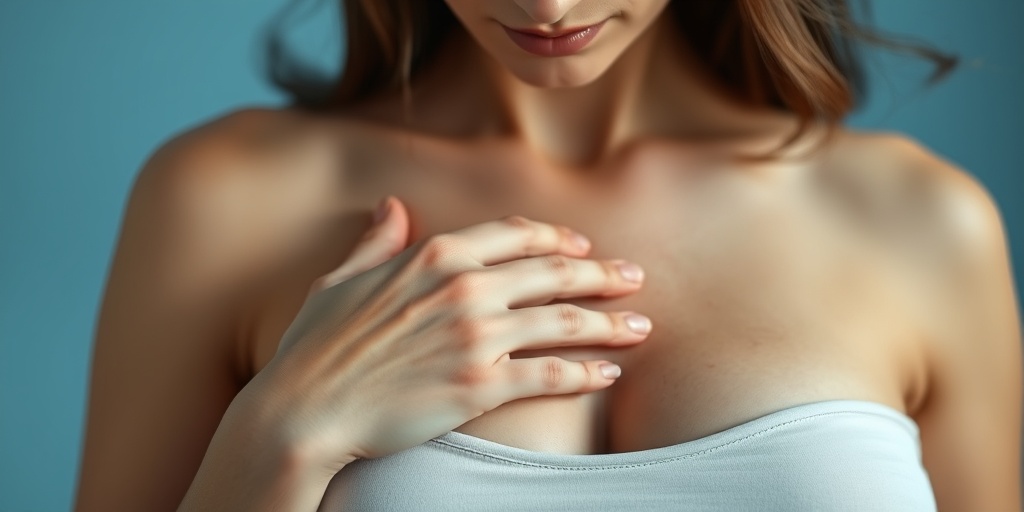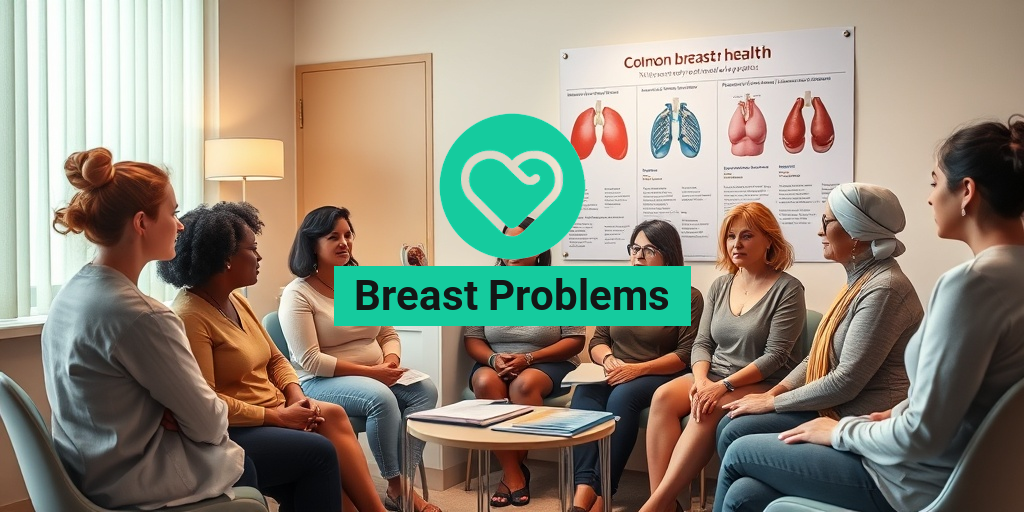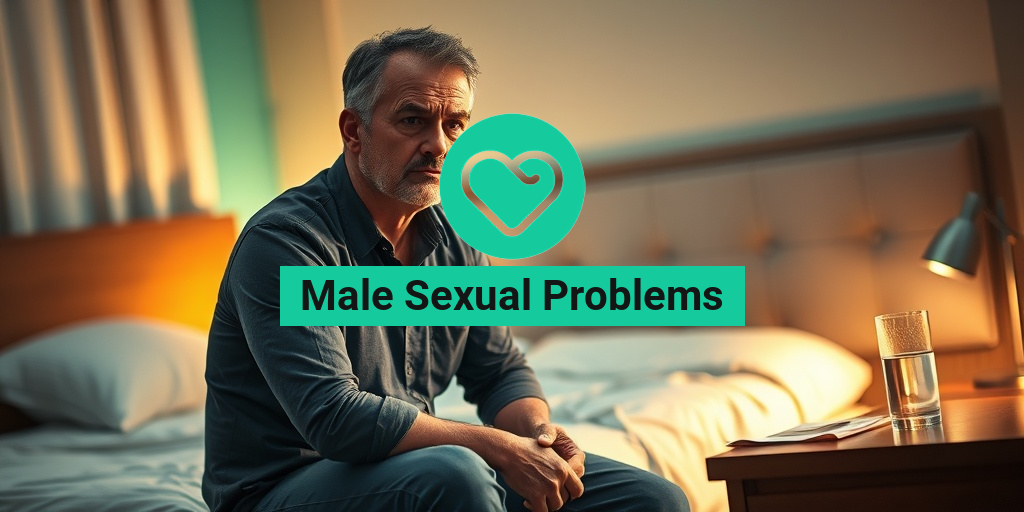What Are Breast Problems?
Breast problems encompass a wide range of conditions that can affect individuals of all genders and ages. While many people associate breast issues primarily with women, it’s important to recognize that breast problems can also occur in men. These issues can vary from benign conditions to more serious health concerns, including breast cancer. Understanding the different types of breast problems is crucial for early detection and effective treatment.
Breast problems can manifest in various ways, including pain, lumps, changes in size or shape, and skin alterations. Some common causes of breast problems include hormonal changes, infections, and trauma. It’s essential to be aware of your body and any changes that may occur, as early intervention can lead to better outcomes.
Types of Breast Problems
- Benign Breast Conditions: These include cysts, fibroadenomas, and mastitis. While they are not cancerous, they can still cause discomfort and require medical attention.
- Breast Cancer: This is a more serious condition that requires prompt diagnosis and treatment. Regular screenings and self-examinations are vital for early detection.
- Hormonal Changes: Fluctuations in hormones, particularly during menstruation, pregnancy, or menopause, can lead to various breast symptoms.
- Infections: Conditions like mastitis can occur, especially in breastfeeding women, leading to pain and swelling.
For those seeking more information on breast health, Yesil Health AI offers evidence-based answers to your health questions, helping you navigate your concerns with confidence.
Common Breast Symptoms
Recognizing the common symptoms associated with breast problems is essential for maintaining breast health. Here are some of the most frequently reported symptoms:
1. Breast Pain
Breast pain, or mastalgia, can be cyclical or non-cyclical. Cyclical pain is often linked to hormonal changes during the menstrual cycle, while non-cyclical pain may arise from other factors such as injury or infection. If you experience persistent or severe pain, it’s advisable to consult a healthcare professional.
2. Lumps or Masses
Finding a lump in the breast can be alarming. While many lumps are benign, such as cysts or fibroadenomas, any new or unusual lump should be evaluated by a doctor. Regular self-examinations can help you become familiar with your breast tissue and identify changes early.
3. Changes in Size or Shape
Sudden changes in the size or shape of the breasts can be a cause for concern. This may occur due to hormonal fluctuations, weight changes, or other underlying conditions. If you notice significant changes, it’s important to seek medical advice.
4. Skin Changes
Changes in the skin of the breast, such as redness, swelling, or dimpling, can indicate underlying issues. Conditions like inflammatory breast cancer can present with these symptoms, making it crucial to consult a healthcare provider if you notice any unusual skin changes.
5. Nipple Discharge
While some nipple discharge can be normal, especially during pregnancy or breastfeeding, any unexpected discharge should be evaluated. This includes discharge that is bloody or occurs without stimulation.
6. Breast Changes During Pregnancy and Postpartum
Pregnancy and the postpartum period can bring about various breast changes, including tenderness, swelling, and changes in nipple appearance. These changes are typically normal, but if you experience severe pain or other concerning symptoms, it’s essential to reach out to a healthcare professional.
In conclusion, being aware of breast problems and their symptoms is vital for maintaining breast health. Regular self-examinations, awareness of changes, and seeking medical advice when necessary can help ensure early detection and treatment of potential issues. For more information and resources on breast health, visit Yesil Health AI for reliable, evidence-based health answers. Remember, your health is in your hands! 💖

Causes of Breast Issues
Breast problems can arise from a variety of factors, and understanding these causes is essential for effective management and treatment. Here are some of the most common causes of breast issues:
Hormonal Changes
One of the primary causes of breast problems is hormonal fluctuations. These changes can occur during:
- Menstrual Cycle: Many women experience breast tenderness or swelling in the days leading up to their period due to hormonal shifts.
- Pregnancy: During pregnancy, hormonal changes prepare the breasts for breastfeeding, often leading to discomfort or changes in size.
- Menopause: As women approach menopause, declining estrogen levels can lead to various breast issues, including pain and changes in texture.
Infections
Infections can also lead to breast problems, particularly in breastfeeding women. Conditions such as mastitis can cause inflammation and pain in the breast tissue. Symptoms may include:
- Redness and swelling
- Pain or tenderness
- Fever and chills
Cysts and Fibrocystic Changes
Breast cysts are fluid-filled sacs that can develop in the breast tissue. They are often benign but can cause discomfort. Fibrocystic breast changes refer to a condition where the breast tissue becomes lumpy or rope-like, often accompanied by pain or tenderness.
Trauma or Injury
Physical trauma to the breast, whether from an accident or surgery, can lead to various issues, including pain, swelling, or changes in breast shape. It’s important to monitor any changes following an injury and consult a healthcare provider if concerns arise.
Genetic Factors
Some women may be genetically predisposed to breast problems. Family history of breast conditions, including breast cancer, can increase the likelihood of developing similar issues. Genetic mutations, such as those in the BRCA1 and BRCA2 genes, are significant risk factors.
Risk Factors for Breast Problems
Understanding the risk factors associated with breast problems can help in early detection and prevention. Here are some key risk factors to consider:
Age
As women age, the risk of developing breast problems increases. Women over the age of 40 are generally advised to begin regular mammograms to monitor breast health.
Family History
A family history of breast problems, particularly breast cancer, can significantly elevate an individual’s risk. If close relatives have experienced breast issues, it’s crucial to discuss this with a healthcare provider.
Personal Health History
Women with a personal history of breast problems, such as benign breast disease or previous breast cancer, are at a higher risk for future issues. Regular check-ups and screenings are essential for monitoring health.
Obesity and Lifestyle Factors
Obesity is linked to an increased risk of breast problems, particularly after menopause. Additionally, lifestyle factors such as:
- Alcohol Consumption: High alcohol intake has been associated with an increased risk of breast cancer.
- Smoking: Tobacco use can negatively impact overall health and may contribute to breast issues.
- Lack of Physical Activity: Regular exercise is vital for maintaining a healthy weight and reducing the risk of breast problems.
Hormone Replacement Therapy (HRT)
Women undergoing hormone replacement therapy for menopausal symptoms may have an increased risk of breast problems. It’s essential to discuss the benefits and risks of HRT with a healthcare provider.
Radiation Exposure
Previous exposure to radiation, particularly in the chest area for cancer treatment, can increase the risk of developing breast problems later in life. Regular monitoring is crucial for those with such a history.
By understanding the causes and risk factors associated with breast problems, individuals can take proactive steps towards maintaining their breast health. Regular check-ups, awareness of changes, and a healthy lifestyle are key components in managing breast health effectively. 🌸

Breast Problems Diagnosis
Diagnosing breast problems can be a complex process, as there are numerous conditions that can affect breast health. Early detection is crucial, especially when it comes to serious issues like breast cancer. Understanding the diagnostic process can empower individuals to seek timely medical advice and treatment.
Common Diagnostic Methods
When you visit a healthcare provider with concerns about your breasts, they may employ several diagnostic methods, including:
- Clinical Breast Exam: A physical examination where the doctor checks for lumps, changes in size, or other abnormalities.
- Imaging Tests: This includes mammograms, ultrasounds, and MRIs, which help visualize the internal structures of the breast.
- Biopsy: If a suspicious area is found, a biopsy may be performed to extract tissue for laboratory analysis.
- Blood Tests: While not directly diagnosing breast problems, blood tests can help rule out other conditions.
Signs and Symptoms to Watch For
Being aware of the signs and symptoms of breast problems is essential. Here are some common indicators that warrant a visit to your healthcare provider:
- Lumps or Masses: Any new lump or mass in the breast or underarm area should be evaluated.
- Changes in Size or Shape: Noticeable changes in the breast’s size or shape can indicate underlying issues.
- Nipple Discharge: Unexplained discharge, especially if it’s bloody or clear, should be investigated.
- Pain or Tenderness: Persistent pain or tenderness in the breast can be a sign of various conditions.
Importance of Regular Screenings
Regular screenings, such as mammograms, are vital for early detection of breast problems, particularly for women over the age of 40 or those with a family history of breast cancer. Early diagnosis can significantly improve treatment outcomes and survival rates. 🩺
Breast Cancer vs. Benign Conditions
When discussing breast problems, it’s essential to differentiate between breast cancer and benign conditions. While both can cause similar symptoms, their implications and treatments differ significantly.
Understanding Breast Cancer
Breast cancer occurs when cells in the breast begin to grow uncontrollably. It can be invasive, spreading to nearby tissues, or non-invasive, remaining within the ducts or lobules. Key points about breast cancer include:
- Risk Factors: Age, genetics, family history, and lifestyle choices can increase the risk of developing breast cancer.
- Symptoms: Symptoms may include a lump, changes in breast shape, skin dimpling, or unusual discharge.
- Treatment Options: Treatment may involve surgery, chemotherapy, radiation, or hormone therapy, depending on the stage and type of cancer.
Benign Breast Conditions
On the other hand, benign breast conditions are non-cancerous and often do not pose a serious health risk. Some common benign conditions include:
- Fibrocystic Changes: Characterized by lumpy or rope-like breast tissue, often accompanied by pain or tenderness.
- Fibroadenomas: Solid, non-cancerous tumors that are usually painless and can be felt as lumps.
- Intraductal Papillomas: Small, wart-like growths in the ducts that can cause discharge but are not cancerous.
Key Differences
Understanding the differences between breast cancer and benign conditions is crucial for effective management:
- Growth Patterns: Cancerous cells grow uncontrollably, while benign conditions typically grow slowly and do not invade surrounding tissues.
- Symptoms: While both can present similar symptoms, benign conditions often have less severe implications.
- Prognosis: Benign conditions usually have a good prognosis, while breast cancer requires more intensive treatment and monitoring.
In conclusion, being proactive about breast health through regular check-ups and understanding the differences between various breast problems can lead to better outcomes and peace of mind. Remember, if you notice any changes or have concerns, consult a healthcare professional promptly! 🌸

Treatment Options for Breast Problems
When it comes to breast problems, understanding the various treatment options available is crucial for effective management and recovery. Whether you’re dealing with benign conditions or more serious issues, there are several approaches to consider. Here, we’ll explore some common treatment options for different types of breast problems.
1. Medical Treatments
Many breast problems can be treated with medical interventions. Here are some common medical treatments:
- Medications: Depending on the condition, medications such as pain relievers, hormonal therapies, or antibiotics may be prescribed. For instance, hormonal treatments can help manage conditions like fibrocystic breast changes.
- Physical Therapy: For issues related to breast pain or discomfort, physical therapy may be recommended to strengthen surrounding muscles and improve posture.
- Surgery: In cases where lumps or cysts are present, surgical intervention may be necessary. This could involve a lumpectomy or mastectomy, depending on the severity of the problem.
2. Lifestyle Changes
In addition to medical treatments, making certain lifestyle changes can significantly improve breast health:
- Diet: A balanced diet rich in fruits, vegetables, whole grains, and healthy fats can support overall breast health. Foods high in antioxidants may help reduce inflammation.
- Exercise: Regular physical activity can help maintain a healthy weight and reduce the risk of breast problems. Aim for at least 150 minutes of moderate exercise each week.
- Stress Management: High stress levels can exacerbate breast problems. Techniques such as yoga, meditation, and deep breathing exercises can be beneficial.
3. Alternative Therapies
Some individuals may find relief through alternative therapies. While these should not replace conventional treatments, they can complement them:
- Acupuncture: This traditional Chinese medicine technique may help alleviate breast pain and discomfort.
- Herbal Remedies: Certain herbs, like evening primrose oil, are believed to help with breast tenderness and hormonal balance.
Preventive Measures for Breast Health
Preventing breast problems is often more effective than treating them. Here are some key preventive measures to consider for maintaining optimal breast health:
1. Regular Screenings
One of the most effective ways to catch potential issues early is through regular screenings:
- Self-Exams: Performing monthly breast self-exams can help you become familiar with your breasts and notice any changes.
- Clinical Exams: Schedule regular check-ups with your healthcare provider for professional breast exams.
- Mammograms: Women over 40 should have annual mammograms, or earlier if there’s a family history of breast problems.
2. Healthy Lifestyle Choices
Adopting a healthy lifestyle can significantly reduce the risk of developing breast problems:
- Avoid Smoking: Smoking is linked to various health issues, including breast cancer. Quitting can improve overall health.
- Limit Alcohol Consumption: Studies suggest that excessive alcohol intake may increase the risk of breast problems. Moderation is key.
- Maintain a Healthy Weight: Obesity is a known risk factor for breast problems. A balanced diet and regular exercise can help manage weight.
3. Hormonal Balance
Hormonal fluctuations can lead to various breast issues. Here are some tips to maintain hormonal balance:
- Manage Stress: Chronic stress can disrupt hormonal balance. Incorporate stress-reducing activities into your routine.
- Consider Dietary Adjustments: Foods rich in phytoestrogens, like flaxseeds and soy, may help balance hormones naturally.
By understanding the treatment options available and implementing preventive measures, you can take proactive steps towards maintaining your breast health. Remember, early detection and a healthy lifestyle are your best allies in preventing and managing breast problems. 🌸

Frequently Asked Questions about Breast Problems
What are common breast problems in women?
Common breast problems in women include conditions such as fibrocystic breast changes, mastitis, and breast pain. These issues can arise due to hormonal fluctuations, infections, or other underlying health conditions.
Are there breast problems other than cancer?
Yes, there are several breast problems other than cancer. These can include benign tumors, cysts, and infections. It’s important to consult a healthcare provider for proper diagnosis and treatment.
What solutions are available for breast problems?
Solutions for breast problems vary depending on the specific condition. Common treatments may include:
- Medications for pain relief or infection
- Hormonal therapy for hormonal imbalances
- Surgery for lumps or cysts
- Supportive bras for breast pain
Can breast problems occur during pregnancy?
Yes, breast problems during pregnancy are common. Women may experience swelling, tenderness, or increased sensitivity in their breasts due to hormonal changes. It’s advisable to discuss any concerns with a healthcare provider.
Do men experience breast problems?
Absolutely! Breast problems in men can include conditions such as gynecomastia and breast pain. These issues can be caused by hormonal imbalances, certain medications, or underlying health conditions.
What are breast problems after delivery?
After delivery, women may face breast problems such as engorgement, mastitis, or nipple pain. These issues can affect breastfeeding and should be addressed with a healthcare professional.
How can I manage breast problems when breastfeeding?
To manage breast problems when breastfeeding, consider the following tips:
- Ensure proper latch to reduce nipple pain
- Use warm compresses to relieve engorgement
- Consult a lactation expert for guidance
What treatments are available for breast problems?
Treatment for breast problems can vary widely based on the specific issue. Options may include:
- Over-the-counter pain relievers for discomfort
- Antibiotics for infections
- Regular monitoring for benign conditions
What are postpartum breast problems?
Postpartum breast problems can include breast engorgement, blocked ducts, and nipple soreness. These conditions can be uncomfortable but are often manageable with proper care and support.




